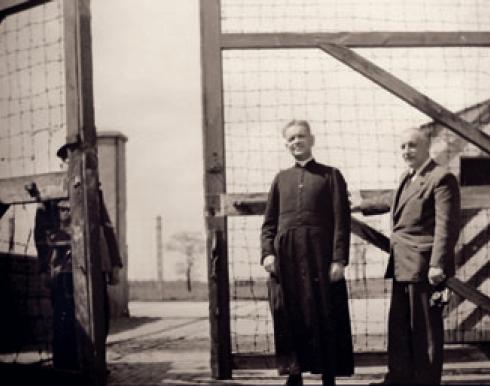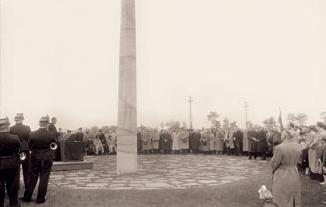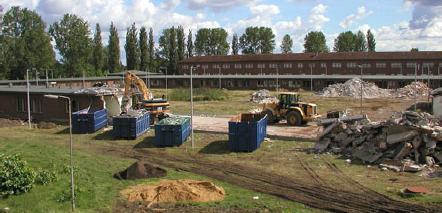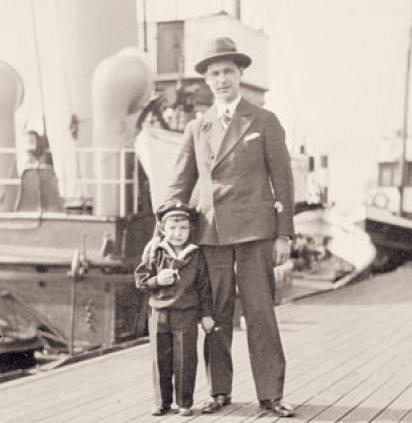Forms of Commemoration
In the first post-war years, commemorating the victims of the concentration camps was an important political issue. Up to 20,000 people attended the first commemorative ceremonies in Ohlsdorf cemetery in Hamburg. But in 1949, with the onset of the Cold War, party political quarrels started to interfere with this shared practice of remembrance. Survivors and their families had no access to the grounds of the former concentration camp, because the site was being used as a prison. It was not until 1953 that the Hamburg Senate gave in to political pressure from abroad and erected a simple memorial column there.

Canon Noël Carlotti, a member of a French government commission that enquired into the whereabouts of humanashes and the sites of the crematoria. The French section of the Amicale planned to erect a monument there. The picture was taken in May 1951 and comes from Renée Aubry’s private photo album.

Early Forms of Commemoration
In the first post-war years, commemorations took place in the Ohlsdorf cemetery, where the first memorial was unveiled in 1949. In 1953, under pressure from the French government, a memorial was erected on the site of the former camp nursery. The former crematorium site was made accessible and marked in 1970, and the prisoner camp became part of the memorial in 2003. Abroad, trips to the sites of the concentration camps were often understood as pilgrimages.

History of the Commemorative Sites of Neuengamme
The history of Neuengamme memorials includes the creation of the first memorial with its inauguration in 1965, the opening of the Document Building in 1981, and the establishment of the Neuengamme Concentration Camp Memorial in the 2000s. Since the 1980s, memorial sites have been established at former subcamps of Neuengamme Concentration Camp.

The Second and Third Generation
The children of former concentration camp prisoners were shaped in different ways by the experiences of their parents. Various factors play a role in how families deal with this: the reason for imprisonment, the experience of violence and death during imprisonment, and how the mother or father deals with their own history. What they all have in common, however, is that they attach significant importance to their own lives to their mother's or father's experience of imprisonment.